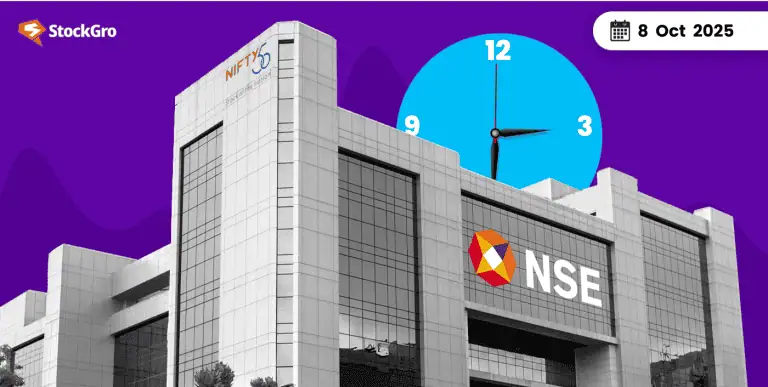
What if you opened your mutual fund app one morning and saw your returns dipping after months or even years of patience? That small red number next to your investment might feel like your hard-earned money has given no profits. So, YTD or Year-to-Date is used by big investors to see if the fund has gained or lost.
YTD only talks about this year’s journey. It doesn’t tell you how the fund performed in the past few years. A fund might look great this year but may have struggled earlier. So, while YTD helps you get a feel for current momentum, it shouldn’t be the only thing you rely on before investing. Let’s see more details here.
What Is YTD in Mutual Fund?
Year-to-Date in mutual funds means how much your fund has gone up or down since the start of the year (January 1) until today. It gives you a quick idea of how the fund has been doing this year. Investors check YTD returns to see which funds are performing better in the current market conditions. For instance, if one equity fund shows a YTD return of 15% and another shows 5%, you instantly know which one has done better this year so far.
How to Calculate YTD Return (with Formula)
You might start investing in a mutual fund on January 1, and till October, you want to know how much your investment has grown? So, here you can go for YTD, or Year-to-Date return.
It’s just a number that has been showing how your money has grown or dropped since the start of the year.
Let’s see what the formula is:
YTD Return = ((Current Value – Starting Value) / Starting Value) * 100
Where:
- Current Value = The value of your mutual fund today
- Starting Value = The value of your mutual fund on January 1
Example: Calculating YTD Return
Here’s a simple example to understand how YTD return works.
You began investing ₹20,000 in a mutual fund on January 1. And by September 30, you got ₹23,000 in return.
Now, using the YTD formula:
YTD Return = ((23,000 – 20,000) / 20,000) * 100
So, it gives you a 15% YTD return.
This means your mutual fund has earned 15% profit from the beginning of the year up to September 30.
Why YTD Matters for Investors
YTD is useful because it gives you a clear idea of how your fund is doing this year so far. Here’s why many investors like checking it:
- You can track how much your fund has changed since the start of the year.
- It helps you compare easily with other funds or market indexes like Nifty or Sensex.
- It’s handy for short-term checks, especially when markets are rising or falling fast.
Limitations & Cautions of YTD Metric
Even though YTD looks simple, it doesn’t show everything:
- It only shows short-term movement: A fund might look good this year but may not have done well over the long run.
- Sectors behave differently: Some funds, like retail ones, may look slow mid-year but pick up later.
- Big events move things: Sudden rallies or drops can make YTD numbers jump or fall fast.
- YTD periods vary: Some funds count from January, others from the financial year, so that comparisons can be a problem.
- Need to use other tools than YTD: You can use other tools to check trends over months or longer periods.
- Take random decisions: Some investors panic or get overconfident by looking only at YTD returns.
YTD vs Other Return Metrics (1Y, 3Y, Since Inception)
Each of these metrics gives you a different view of how your money has been growing.
| Metric | Time Covered | What It Tells You | Why It Matters |
| YTD (Year-to-Date) | From January 1 to today | Shows how the fund is doing this year so far | Helps track current momentum and short-term shifts |
| 1-Year Return | Last 12 months | Measures full-year growth or loss | Useful to see how the fund handles market cycles over a full year |
| 3-Year Return | Last 36 months | Shows medium-term consistency | Helps filter out short-term ups and downs to see the real trend |
| Since Inception | From launch to today | Displays long-term track record | Best for understanding how well the fund has done overall since it started |
Conclusion
YTD is your short-term check. 1-year and 3-year returns are your reality check. Since inception is your trust check.
If you only look at YTD, you might miss the story behind the numbers. A smart investor always compares all three to see not just how the fund is performing now, but how it has grown and survived through time.
So the next time you see your YTD return, don’t stop there. You can use it with the 1-year, 3-year, and since inception numbers. It will help you understand your investment far better than most.
FAQs
YTD shows how much your mutual fund has grown or dropped since the start of the year. If the number is up, your fund has earned. If it’s down, it has lost a bit.
Get the recent value of your fund, subtract what it from the value it had at the start of the year. Then divide by the starting value. At last, you can multiply by 100 to get the percentage. This is what YTD is.
YTD only shows short-term results. It does not show how your fund has done over many years. You should also see 1-year, 3-year, or since inception returns to make better decisions on this.
YTD shows growth from January 1 to today. A 1-year return can give growth over the last 12 months while a 3-year return will give for the last 36 months. Longer periods give a better idea of how steady the fund is.
Yes. If your fund loses value compared to the start of the year, YTD will show a negative percentage. This just shows the fund is down so far this year.
YTD helps to get short-term progress, but you should not depend on it alone. Always look at longer-term returns too. This will help you see which funds are steady and which may be riskier.

